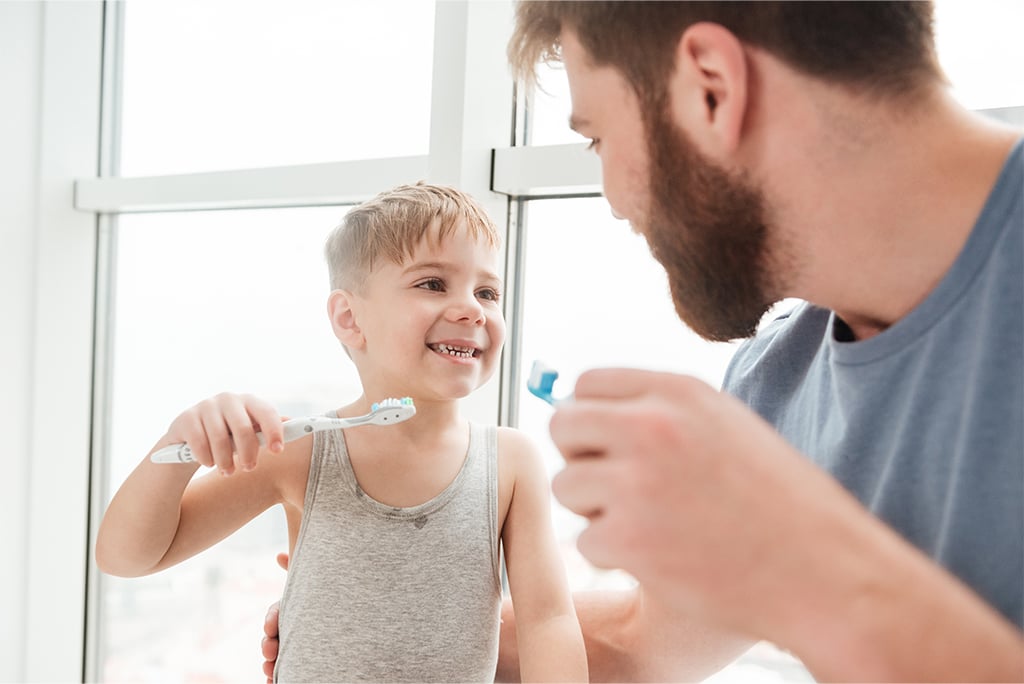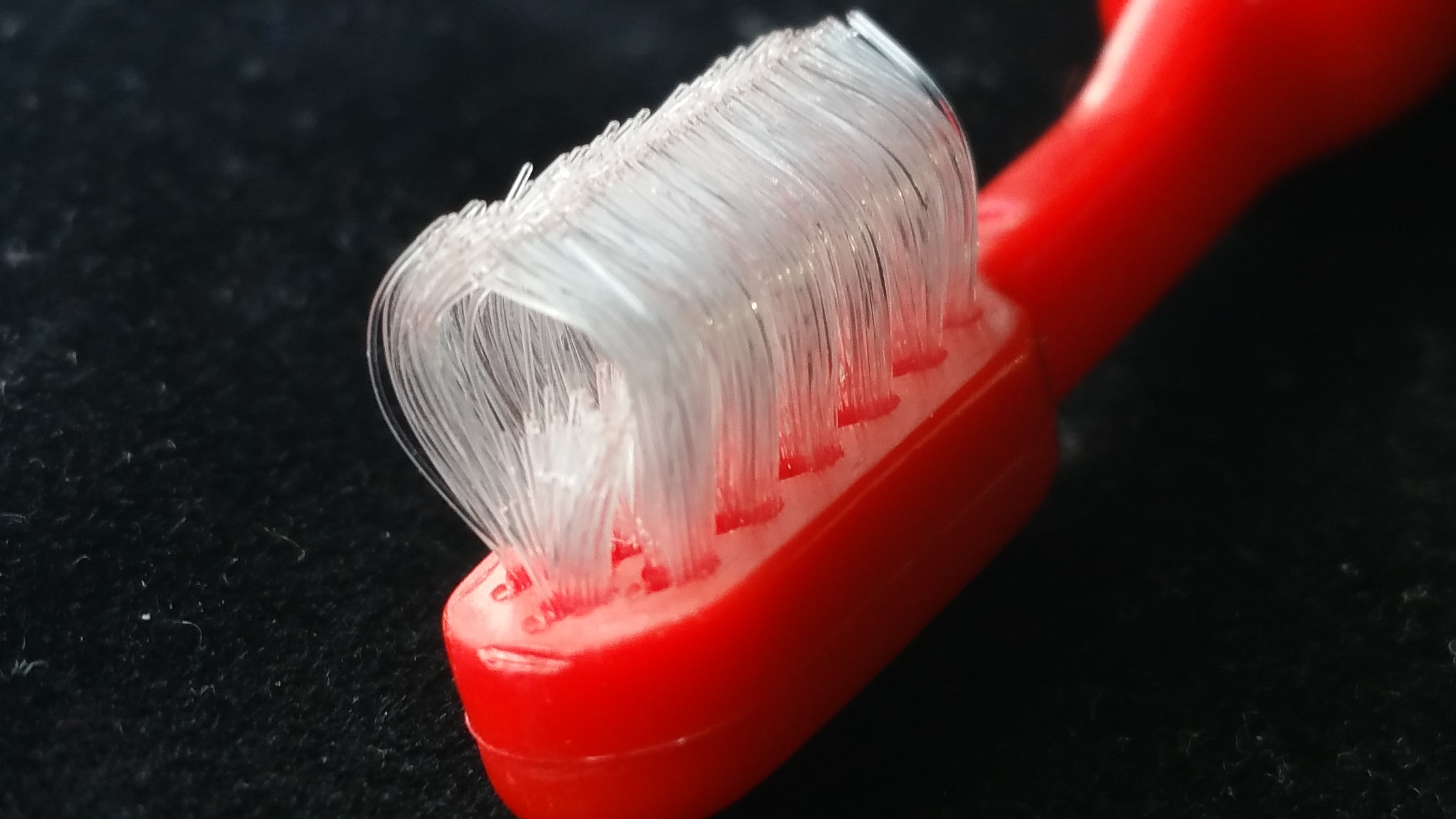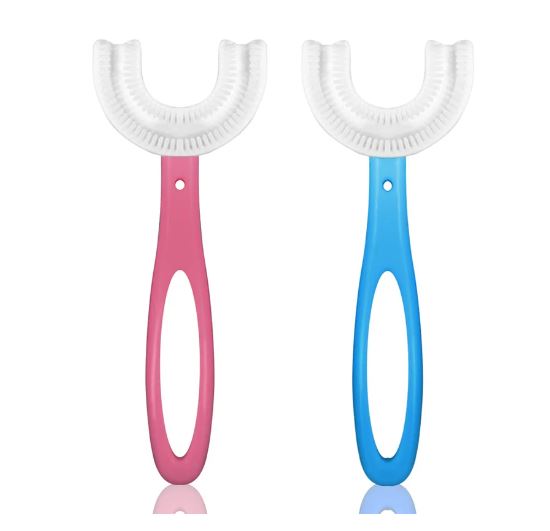 Brushing our teeth is a vital component of self-care routines throughout life. We all learn from an early age that it supports good oral health and hygiene. Many children can face challenges with having their teeth brushed or learning how to do it by themselves. This can include experiencing sensory sensitivities, challenges with fine motor skills, or issues with establishing self-care routines.
Brushing our teeth is a vital component of self-care routines throughout life. We all learn from an early age that it supports good oral health and hygiene. Many children can face challenges with having their teeth brushed or learning how to do it by themselves. This can include experiencing sensory sensitivities, challenges with fine motor skills, or issues with establishing self-care routines.
Tooth brushing is vital for fostering a child's independence in self-care and overall health and wellbeing. As children grow, they are expected to master this task independently, both in preparation for the day and before bedtime.
Dentists recommend brushing teeth for approximately two minutes, twice a day. This typically occurs after breakfast and before going to bed in the evening. This routine may work for some families, but it needs to be individualised for every child. For example, if your child is brushing their teeth for 10 seconds daily, this is better than not brushing them at all. It is all about building the routine one step at a time, from where your child is currently at.
Regular daily brushing helps remove plaque, the sticky film of bacteria that forms on teeth and can significantly damage the tooth enamel. If the enamel is damaged, it risks the bacteria getting inside the tooth, which can cause discomfort and further damage. By establishing good oral hygiene habits early on, you can help your child avoid these painful and costly dental problems in the future. Baby teeth might be temporary, but they serve as important placeholders for adult teeth. It is important to keep baby teeth healthy to ensure that their permanent, adult teeth grow in properly aligned and spaced.
Here are some tips that may help you and your child with tooth brushing:
Create a consistent routine
Creating a consistent and predictable toothbrushing schedule and routine can assist your child in knowing what to expect with the brushing task and reduce their anxiety. It is best to incorporate teeth brushing into your child's daily routine at the same time each day, such as after breakfast and before bedtime.
It is important to consider what you want to achieve, or what goals you have around your child’s brushing routine. Depending on your child's age, you may have different goals, e.g. is the goal for the child to brush their own teeth for two minutes or is your goal that the child tolerates getting teeth brushed by an adult for 30 seconds twice a day? It is best to discuss with all caregivers who support your child's routine (e.g. all parents, grandparents, support worker, babysitters) to provide consistency and predictability for your child, and to ensure there is the maximum opportunity for your child to work on and develop the skill/s throughout the week.
Visual supports
- Visual supports, such as visual schedules (see example below), social stories (stories that talk about the routine and what to expect), or visual timers (on your phone, device, or a physical timer), may be helpful for some children. These supports can give your child a clear understanding of what to expect during the task and help them feel more in control of the situation.
Choose the right toothpaste/toothbrush
- There are multiple brands that offer a variety of child-friendly flavoured toothpastes. It is best to try a variety of options for paste and brushes to find which one your child prefers. Remember, that the focus of building the routine is to make your child feel as comfortable and calm as possible to ensure that they can tolerate having their teeth brushed and build a strong hygiene routine.
- Consider using a toothbrush with soft bristles or a vibrating handle, which can provide sensory input that some children may find more enjoyable.
- There are also a variety of alternative toothbrushes available such as the Collis curve toothbrush (in which the bristles curve around the tooth, brushing all sides of a tooth at one time) and U-shaped toothbrush (U-shaped that covers all teeth at once).
Offering choices during challenging activities can give your child some sense of control during the activity.
Set up the environment
- Children benefit from brushing their teeth in front of the mirror to bring awareness to their face and teeth and what is happening during the brushing task, which may increase engagement.
- When children see themselves brushing their teeth in the mirror, they gain immediate visual feedback, meaning they can observe the movements of their hands, the placement of the toothbrush and the areas of their mouth which they are brushing. This supports their understanding of what is occurring in their body (the movements) and the outcome (brushing), which further supports their development and awareness.
Make a specific start and end time
- The length of toothbrushing can often vary from day to day; sometimes it is as short as 10 seconds, sometimes it is as long as two minutes, and often it depends on parents' patience on the day. This can make the task unpredictable for the child. A small change that can have a big impact is giving the toothbrushing task a specific start and end time, which will vary depending on your child's specific goal and needs.
- If your child finds toothbrushing very distressing, you may only want to count from 1-10 quickly; over time, you can count slower increasing the length of toothbrushing duration. Once a child is comfortable with the task, you can let them know that next time we will start counting to 20 or 30 each time, or you can decide on a song or rhyme that your child likes and you will brush for the length of that song or rhyme. Other children may benefit from a sand timer or a timer on a phone or iPad to support their understanding of the duration of the task.
Make it fun
- Practising toothbrushing on either a toy or an adult can teach a child the process of brushing teeth in a more fun environment. This will also allow you to see if your child knows the skills required to brush teeth successfully. These skills learnt in this practice environment can be transferred when the child brushes their teeth. There is also a variety of toothbrushing songs available (generic and themed, such as Bluey, Paw Patrol, Elmo, etc). This helps increase engagement, provide structure, and increase task motivation. You could add this to your daily routine by watching your child's preferred toothbrushing episode right before or after brushing their teeth.
Technology to make the task easier
- There are a wide variety of free apps that use augmented reality to complete challenges while brushing teeth. For example, Brush Monster and Colgate Magik. These may be highly motivating for some children, or they may be distracting and increase stress for others.
- As mentioned above, it is best to trial a variety of strategies and options to find what works best for your child. You may find that it is a combination of strategies, or that they work for a while and then you need to change it up and try something new.
Learning to brush their teeth can be challenging for any child. Similarly to learning any new task, it may take a while for your child to develop this new skill. It is important to remember that there are many factors to consider in brushing, including sensory considerations, managing emotions, and developing fine motor control. It is possible to establish a successful routine with the right strategies and support. It is important to stay patient and be consistent with the strategies that you are trialling. This will ensure that you can help your child develop good oral hygiene habits that will benefit them for a lifetime. Remember, every child is unique, so do not be afraid to experiment with different techniques to find out what works best for your child to make brushing a success. Good luck!
If you are concerned about your child’s brushing skills or feel that it is beyond the scope of strategies that you have trialled, please consult an Occupational Therapist for further support.
References
Al-Batayneh, O. B., Nazer, T. S., Khader, Y. S., & Owais, A. I. (2019). Effectiveness of a tooth-brushing programme using the picture exchange communication system (PECS) on gingival health of children with autism spectrum disorders. European Archives of Paediatric Dentistry, 21(2), 277–283. https://doi.org/10.1007/s40368-019-00485-x
Budhdeo, R., & Kabban, M. (2024). Improving sensory awareness in a dental setting for patients with autism spectrum disorder (autism). Dental Update, 51(3), 193–197. https://doi.org/10.12968/denu.2024.51.3.193
Daly, G., Jackson, J., & Lynch, H. (2022). Family life and autistic children with sensory processing differences: A qualitative evidence synthesis of occupational participation. Frontiers in Psychology, 13. https://doi.org/10.3389/fpsyg.2022.940478
Du, R. Y., Yiu, C. K. Y., & King, N. M. (2019/02//). Oral Health Behaviours of Preschool Children with Autism Spectrum Disorders and Their Barriers to Dental Care. Journal of Autism and Developmental Disorders, 49(2), 453-459. https://doi.org/10.1007/s10803-018-3708-5
Floríndez, L. I., Como, D. H., Floríndez, D. C., Floríndez, F. M., Law, E., Polido, J. C., & Cermak, S. A. (2022). Toothbrushing and Oral Care Activities of Autistic and Non-Autistic Latino Children. Children (Basel, Switzerland), 9(5), 741. https://doi.org/10.3390/children9050741


Picture captions (top to bottom): Curved toothbrush; U-shaped toothbrushes and a visual support.
